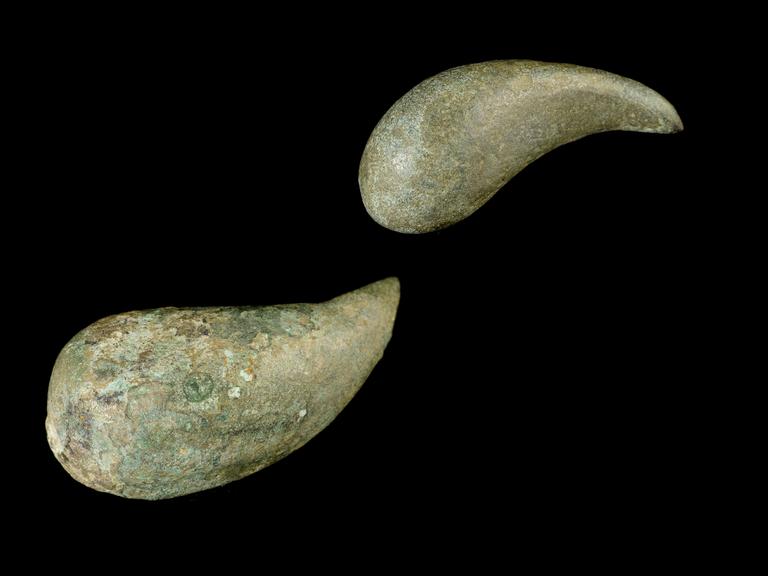
Two small bronze votive tears
- Made:
- 200 BCE-400 CE in Europe








Two small bronze votive tears, possibly Roman, 200BC-400AD
Votive offerings are those left in sacred places to ask for, or express gratitude for, healing. They are often made in the shape of the affected body part. Some are bespoke pieces, cast in expensive metals such as bronze. Others are mass-produced from cheaper materials such as terracotta and wax. Although it originated in earlier cultures, the phenomenon thrived in Ancient Roman Italy between 400 and 100 BC. It persists today in many faiths, including Christianity and Hinduism. These unusual examples are thought to represent tears.
Details
- Category:
- Classical & Medieval Medicine
- Collection:
- Sir Henry Wellcome's Museum Collection
- Object Number:
- A656201
- Materials:
- bronze
- Measurements:
-
tear 2: 35 mm x 14 mm x 12 mm, .02 kg
tear 1: 37 mm x 17 mm x 10 mm, .02 kg
- type:
- votive figure
- credit:
- Loan, Wellcome Trust




